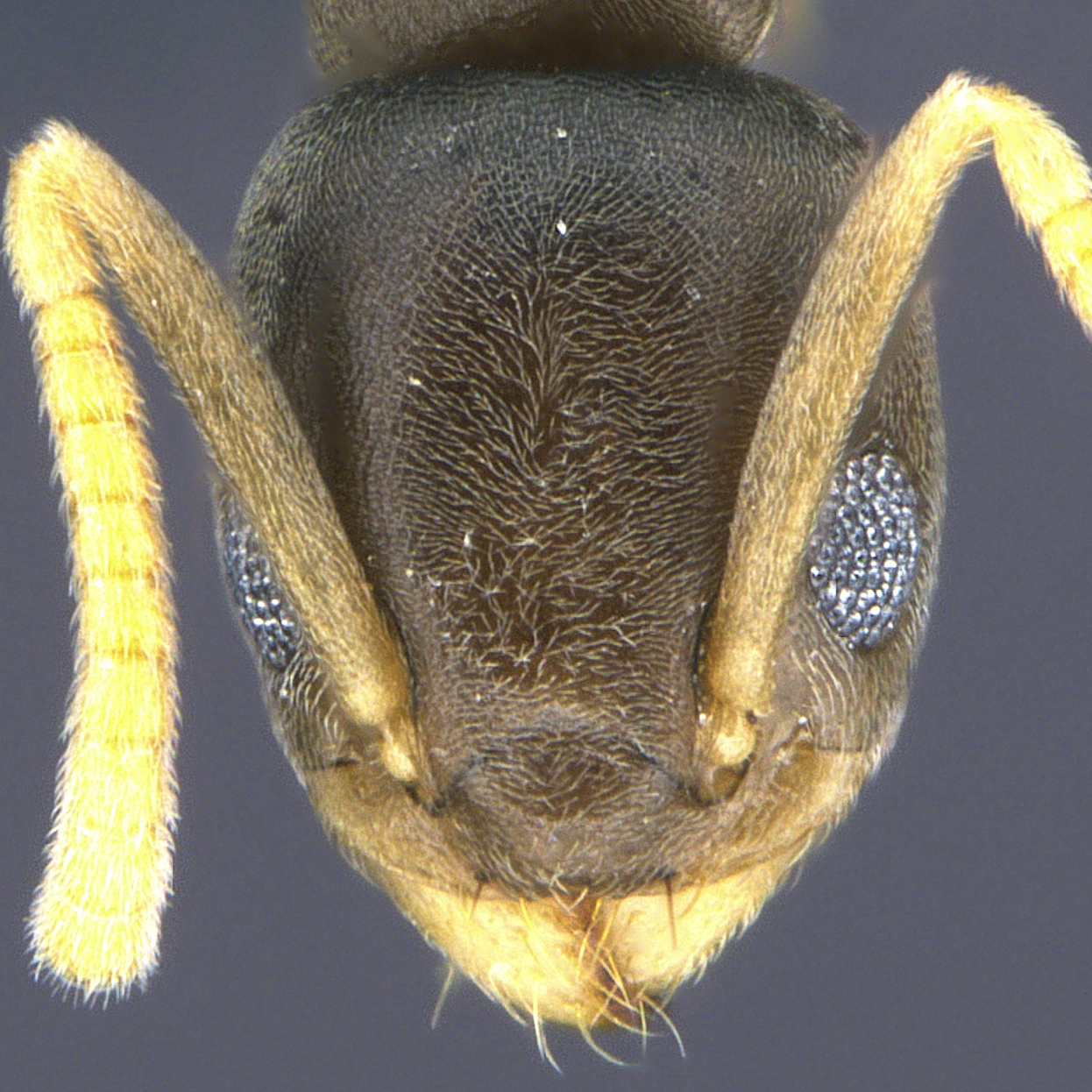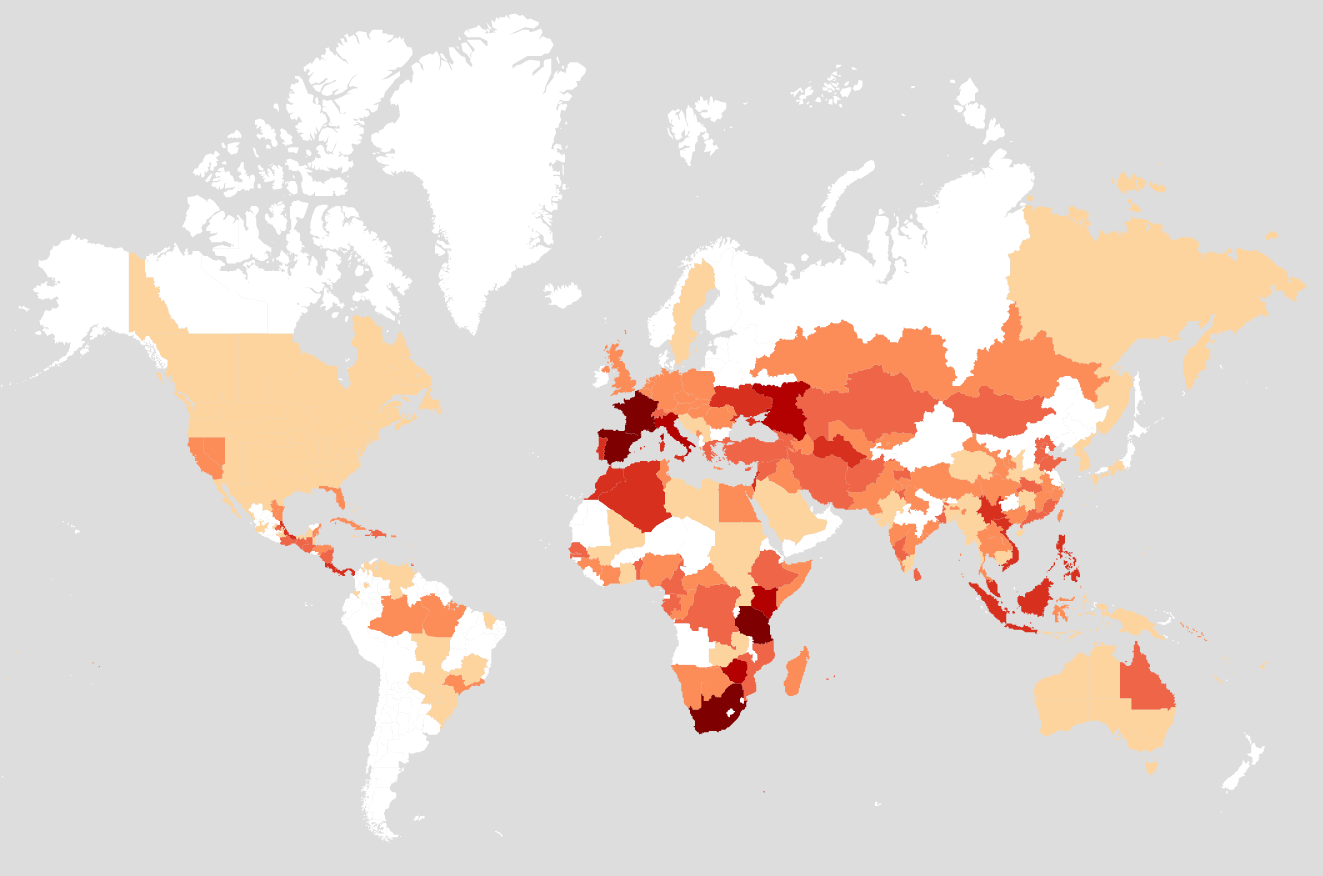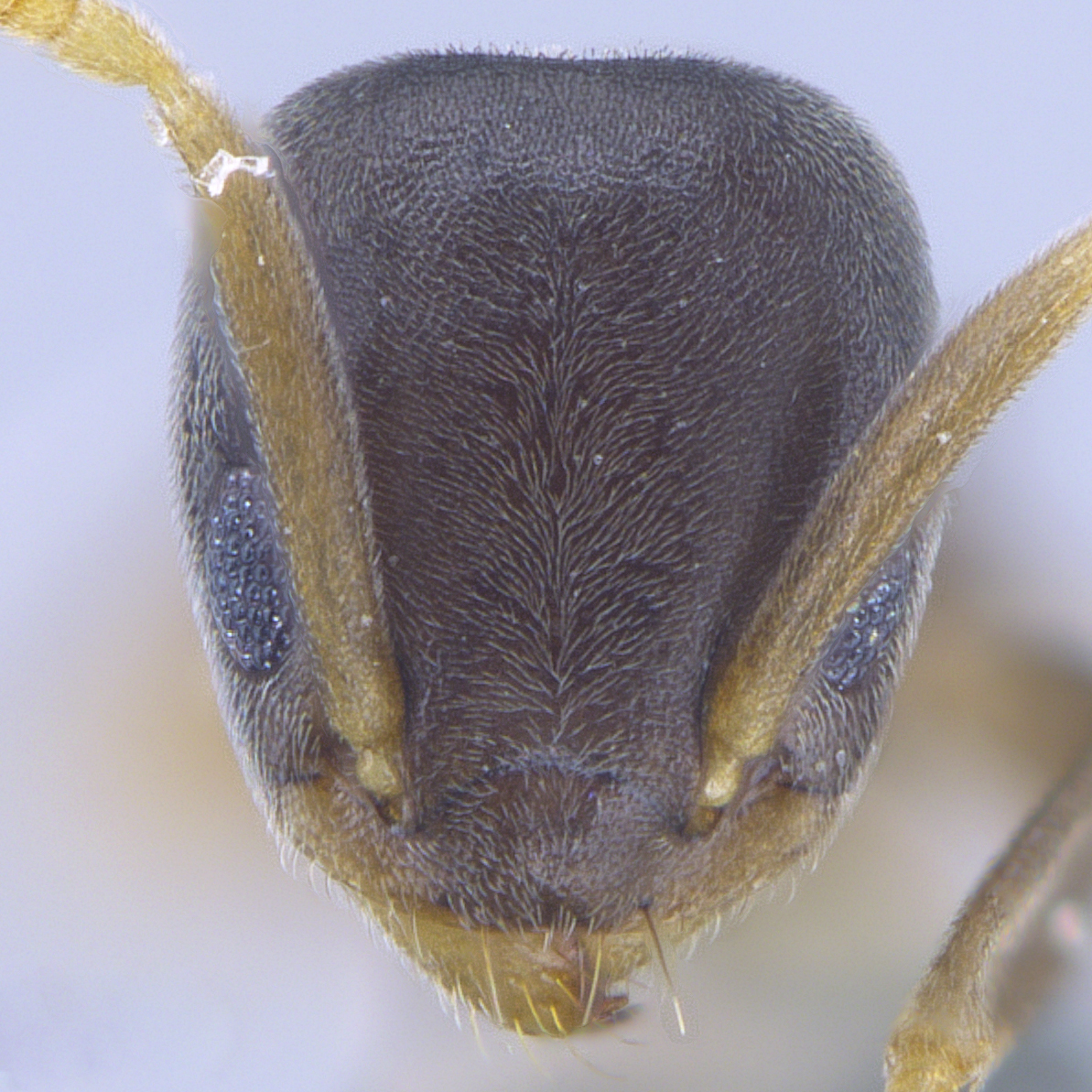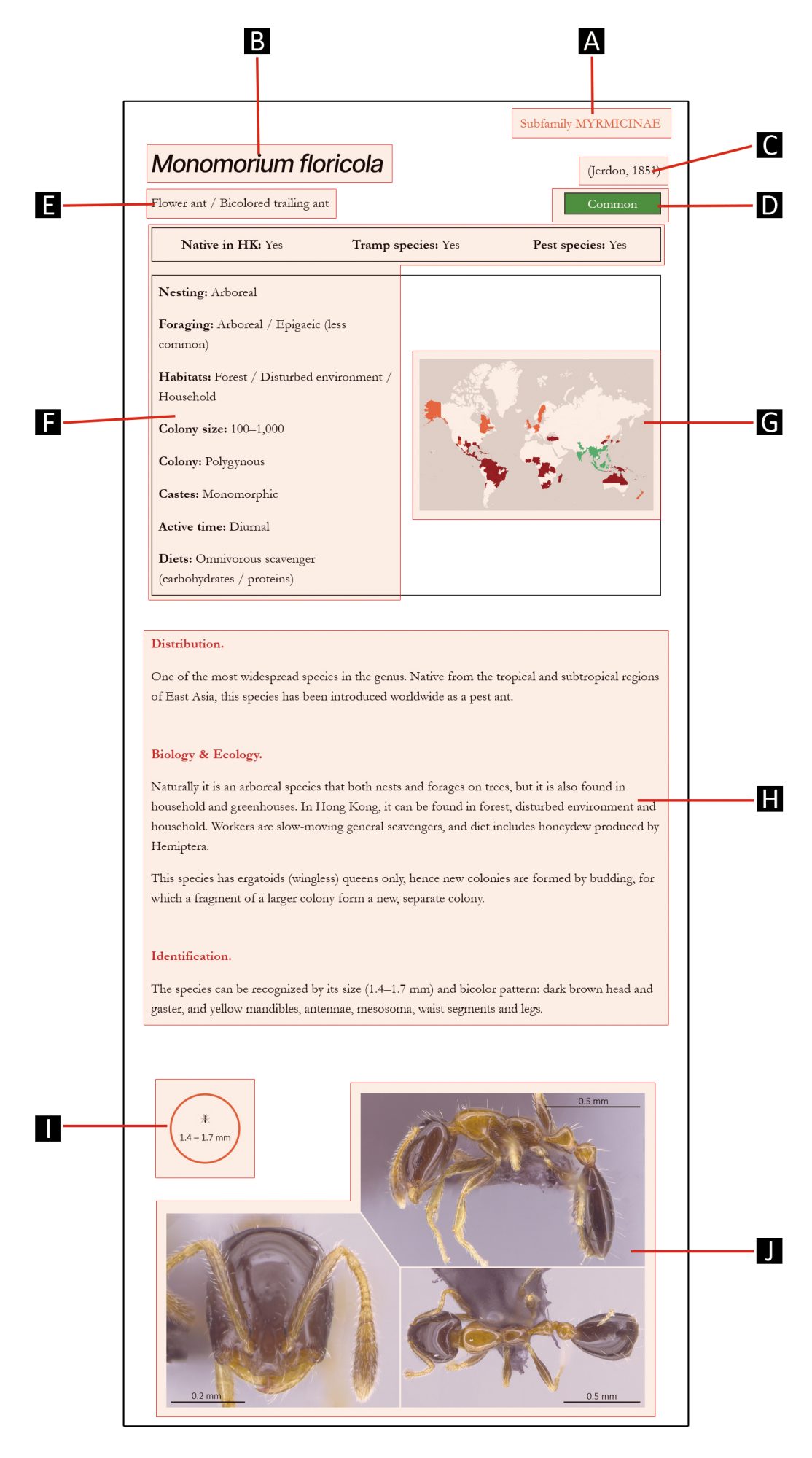
Subfamily DOLICHODERINAE
GENUS
Tapinoma
Foerster, 1850
Distribution.
A moderate-sized ant genus with 70 species described. The genus has a cosmopolitan distribution and can be found on all continents.
Biology & Ecology.
Within tropical and subtropical regions, most species are considered arboreal, which both nest and forage on trees. However, several species from the genus are well-known household pests. Nests contain a hundred up to several thousands of workers, forming polygynous colonies (more than one egg-laying queens per colony).
Tapinoma species are mostly general scavengers. Some species form mutualistic relationship with aphids, coccids or scale insects, which they protect in exchange for honeydew.
Identification.
Tapinoma species are very small in size (1–2 mm), with black to yellow coloration. They can be recognized by the absence of waist segment (sometimes present but greatly reduced). They can be differentiated from Technomyrmex, which also have reduced waist segment, by their last gastral segment (5th gastral tergite) that bent downwards, while this segment is visible in dorsal view in Technomyrmex.
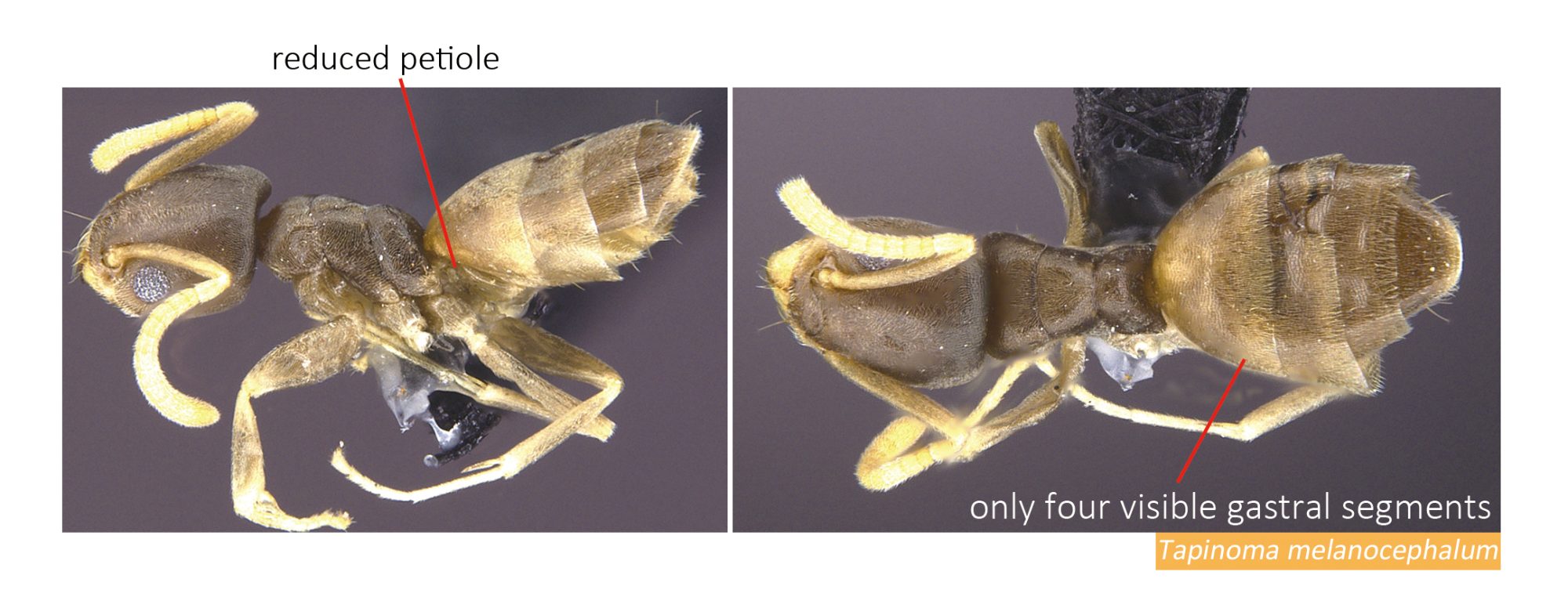
Species in this genus
